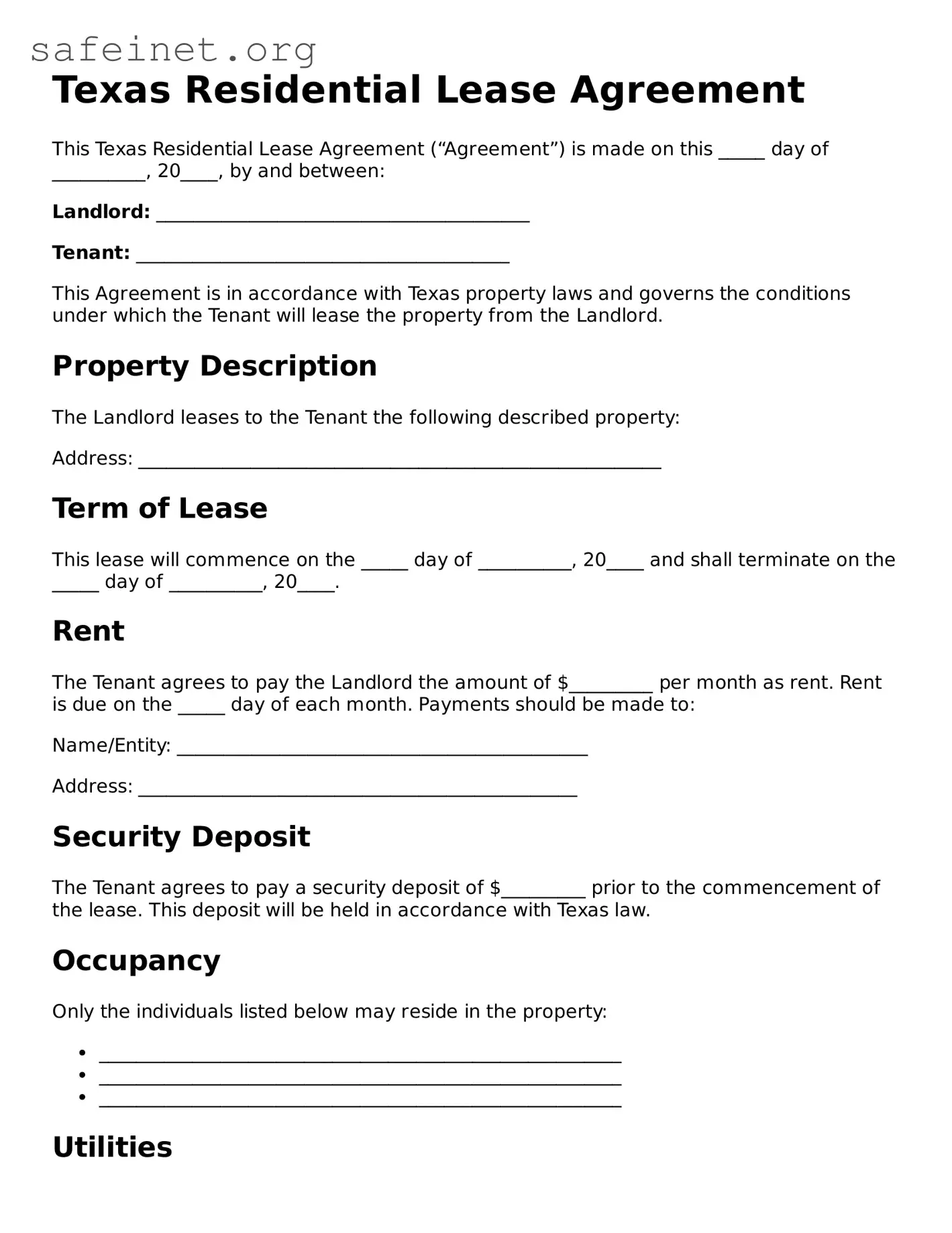Texas Residential Lease Agreement
This Texas Residential Lease Agreement (“Agreement”) is made on this _____ day of __________, 20____, by and between:
Landlord: ________________________________________
Tenant: ________________________________________
This Agreement is in accordance with Texas property laws and governs the conditions under which the Tenant will lease the property from the Landlord.
Property Description
The Landlord leases to the Tenant the following described property:
Address: ________________________________________________________
Term of Lease
This lease will commence on the _____ day of __________, 20____ and shall terminate on the _____ day of __________, 20____.
Rent
The Tenant agrees to pay the Landlord the amount of $_________ per month as rent. Rent is due on the _____ day of each month. Payments should be made to:
Name/Entity: ____________________________________________
Address: _______________________________________________
Security Deposit
The Tenant agrees to pay a security deposit of $_________ prior to the commencement of the lease. This deposit will be held in accordance with Texas law.
Occupancy
Only the individuals listed below may reside in the property:
- ________________________________________________________
- ________________________________________________________
- ________________________________________________________
Utilities
The following utilities will be paid by the Tenant:
- Electricity
- Water
- Gas
- Internet/Cable
Maintenance and Repairs
The Tenant is responsible for maintaining the property in good condition. Any repair issues should be reported to the Landlord promptly.
Termination of Lease
To terminate this lease, either party must provide written notice at least _____ days prior to the desired termination date.
Governing Law
This Agreement shall be governed by the laws of the State of Texas.
Signatures
By signing below, both parties agree to all terms stated in this Agreement:
Landlord Signature: ________________________________ Date: __________
Tenant Signature: ________________________________ Date: __________
This Agreement is binding upon the parties and their successors.
